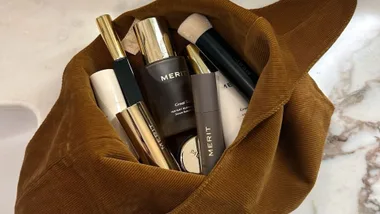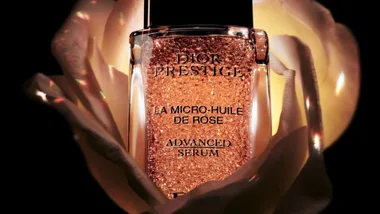BOTOX
What it is: “By preventing muscle contractions, Botulinum toxin [Botox] is the most effective way to minimise or erase frown and fine lines in the short term,” explains Dr Neal Hamilton of Concept Cosmetic Medicine, NSW.
Used for: Frown and forehead lines; crow’s-feet and lifting brows. It can also be used on depressed corners of the mouth; neckbands; and lower jaw muscles, and can be used medically to assist with muscle spasms, migraines and severe sweating.
The risks: The trick to keeping it natural is all about placement and “listening to your health professional – more is not necessarily better”, says Dr Hamilton. Side effects include mild bruising and swelling, but if poorly administered it can make you look stiff, unbalanced or have a heavy eye for a couple of weeks.
Downtime: Expect to see the full effect between two to 14 days post-procedure, with results lasting about six months.
Cost: Price is proportional to the amount of Botulinum toxin used and range from $150 (for a brow lift) to $660 (for a full face).
Did you know 64% of Australian women agree facial (dermal) fillers are more socially acceptable than they were five years ago?
THERMAGE
What it is: A skin-frming treatment designed to help tighten and contour the surface of your skin. “It works by contracting your existing collagen through bulk heating the skin [through non-invasive radio frequency] and hence stimulating new collagen growth,” explains Dr Joseph Hkeik, director and founder of NSW’s All Saints Cosmedical Clinic.
Used for: Fine lines and wrinkles on most body parts, including the face, neck, eyes, tummy, arms, hands, thighs and buttocks.
The risks: Redness, swelling, mild bruising, pain and, if not administered by a professional, occasional skin burns.
Downtime: “Results can be seen three months following tightening treatments and last two–three years depending on the treatment,” he says.
Cost: From $2500.
FILLERS
What it is: Not to be confused with Botox, facial fillers are directly injected into your skin with the purpose of plumping the area to a point where the wrinkle is no longer visible. “Fillers replace the lost volume [by supporting and lifting the sagging skin] and stretch the collagen matrix, enhancing the health of the skin and allowing the dermis to make an abundant amount of new collagen,” explains Dr Hkeik.
Used for: Adding volume and smoothing out creases around the mouth and nose, plumping thinning lips, enhancing cheekbone structure and increasing volume. Can be used alone or in conjunction with several other procedures.
The risks: Slight discomfort and bruising. Other risks like lumping and filler migration can be minimised with an experienced doctor and pain relief medication.
Downtime: Often referred to as a “liquid facelift”, results are immediate and can last up to a year.
Cost: From $750.
LASER SKIN RESURFACING
What it is: “Lasers remove thin layers of skin that create channels in the skin allowing fresh cells to grow,” explains Dr Mark Edinburg of Sydney’s Eden Institute of Plastic and Cosmetic Surgery. When healed, skin looks healthier – often with reduced wrinkles and a more even skin tone.
Used for: Fine lines, pigmentation, dark spots, and skin discolouration.
The risks: “Skin must be well prepped so we advise medical-grade skincare for two weeks prior to treatment depending on your skin type”, explains Edinburg. The chief risk is hyperpigmentation (darkening of the skin).
Downtime: From three to seven days depending on the depth of treatment. This isn’t a lunchtime fix: expect redness, peeling and swelling during the following days.
Cost: From $750–$3000.
“For those considering a professional treatment, the most important thing is to do your research. On the day of the consultation, don’t be afraid to ask questions” – Dr Steven Liew, founder of NSW’s Shape Clinic
 Getty
Getty









